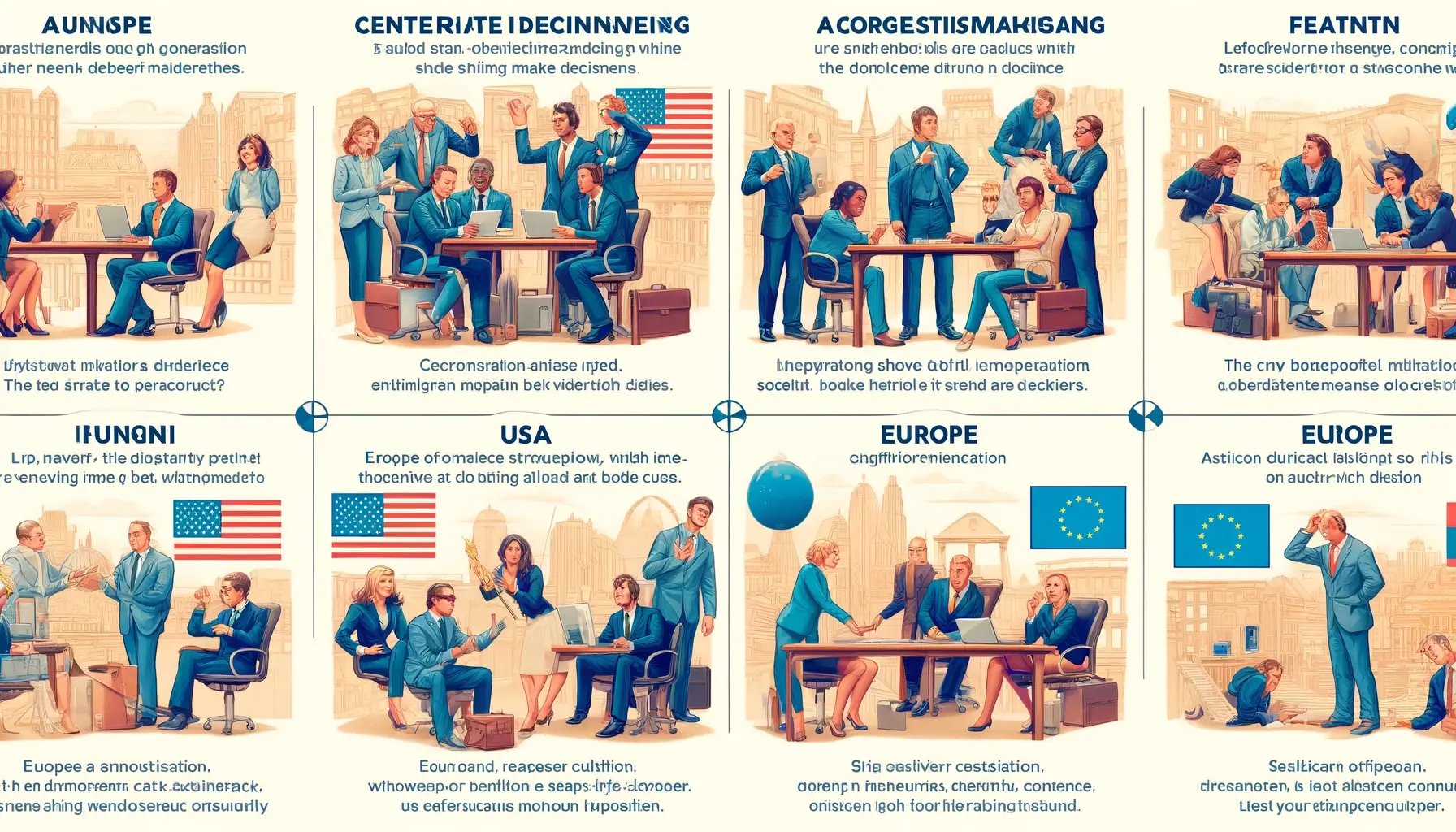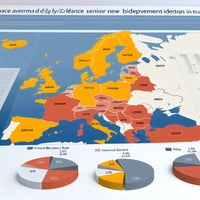Interim and freelance roles in business development, especially at a senior level, offer...
Key Differences Between Europe and the USA
 In the globalized economy, understanding cultural nuances in business practices is essential for success. European and American business cultures, while sharing some commonalities, also exhibit significant differences that can impact how business is conducted. This article explores the biggest differences in doing business between Europe and the USA, focusing on decision-making processes, communication styles, work-life balance, and attitudes towards hierarchy.
In the globalized economy, understanding cultural nuances in business practices is essential for success. European and American business cultures, while sharing some commonalities, also exhibit significant differences that can impact how business is conducted. This article explores the biggest differences in doing business between Europe and the USA, focusing on decision-making processes, communication styles, work-life balance, and attitudes towards hierarchy.
Decision-Making Processes
One of the most striking differences between European and American business cultures is the approach to decision-making. In the USA, businesses tend to favor a more hierarchical and centralized decision-making process. American companies often pride themselves on their ability to make swift decisions, which is facilitated by the clear delineation of authority and responsibility. This efficiency can be attributed to the highly competitive and fast-paced nature of the American market, where time is often equated with money.
Example: In Silicon Valley, tech companies like Apple and Google are known for their rapid decision-making processes. Leaders in these companies often have the final say, and decisions are made quickly to stay ahead in the competitive tech industry. This approach allows for swift innovation and adaptation to market changes.
In contrast, European businesses, particularly in countries like Germany and Sweden, tend to adopt a more consensus-driven approach. Decisions are often made through extensive consultations and discussions, involving multiple levels of the organization. This method ensures that all stakeholders have a say, fostering a sense of inclusiveness and shared responsibility. While this process may be slower, it often leads to more thoroughly vetted and sustainable decisions.
Example: In German manufacturing companies like Siemens or Volkswagen, decision-making involves detailed discussions and inputs from various departments, including engineering, finance, and human resources. This ensures that decisions are well-rounded and consider the perspectives of all relevant stakeholders, leading to long-term sustainability.
Communication Styles
Communication styles also differ markedly between Europe and the USA. Americans are generally more direct and explicit in their communication. This directness can be seen as a reflection of the broader American cultural emphasis on clarity, efficiency, and assertiveness. In business settings, this means that feedback, both positive and negative, is often given openly and candidly.
Example: In an American corporate environment, a manager might say, "This project needs significant improvement in these areas: A, B, and C." The direct approach leaves little room for ambiguity and is designed to facilitate quick action.
European communication styles, however, can vary significantly across the continent. For instance, Northern Europeans, like the Germans and the Dutch, are known for their directness, similar to Americans. In contrast, Southern Europeans, such as the Italians and Spaniards, often employ a more indirect and nuanced form of communication. They may rely on context, body language, and non-verbal cues to convey their messages. Understanding these subtleties is crucial for effective communication and can prevent misunderstandings in business interactions.
Example: In Italy, a business meeting might involve indirect suggestions and a focus on building relationships before diving into critical feedback. A manager might say, "We could explore some alternative approaches to this project," implying changes without directly stating deficiencies.
Work-Life Balance
Work-life balance is another area where European and American business cultures diverge. The USA is renowned for its work-centric culture, where long hours and high levels of dedication are often viewed as indicators of commitment and success. The American work ethic, rooted in the Puritan work ethic, places a high value on productivity and professional achievement.
Example: In American companies like Amazon or Goldman Sachs, employees often work long hours, and it's common to receive emails or work-related communications late into the evening or on weekends. This reflects the high level of dedication expected in these high-pressure environments.
In contrast, many European countries prioritize work-life balance to a greater extent. For example, countries like France and Denmark have stringent labor laws that ensure shorter working hours, generous vacation policies, and strong protections for employee rights. This approach reflects a broader societal value placed on quality of life and well-being. European companies often believe that a well-rested and satisfied workforce is more productive and innovative in the long run.
Example: In France, the "right to disconnect" law allows employees to ignore work emails outside of business hours, emphasizing the importance of personal time. Companies like L’Oréal and Renault provide ample vacation time and encourage employees to use it fully to ensure they are rested and rejuvenated.
Attitudes Towards Hierarchy
Attitudes towards hierarchy and authority also show significant differences between Europe and the USA. American businesses tend to have a more flexible and less formal approach to hierarchy. The emphasis is often on meritocracy and innovation, allowing for a relatively flat organizational structure where employees at all levels are encouraged to contribute ideas and challenge the status quo.
Example: At companies like Netflix and Tesla, employees are encouraged to voice their opinions and ideas directly to top executives. The organizational structure is designed to be flat to promote innovation and quick decision-making.
European businesses, however, can exhibit varying degrees of hierarchical rigidity depending on the country. For example, in the UK and Germany, there is often a more pronounced respect for authority and clearly defined roles within the corporate structure. This respect for hierarchy can sometimes slow down decision-making processes but also provides clarity and order.
Example: In traditional British companies like Rolls-Royce or Lloyds Bank, there is a clear respect for titles and positions. Meetings might be more formal, and decisions often flow from the top down, ensuring that established procedures and protocols are followed.
Conclusion
In summary, while there are many similarities in doing business between Europe and the USA, significant differences remain that can affect how business is conducted. Understanding these differences—in decision-making processes, communication styles, work-life balance, and attitudes towards hierarchy—can provide valuable insights for businesses operating across these regions. By appreciating and adapting to these cultural nuances, companies can enhance their international collaboration, improve employee satisfaction, and ultimately achieve greater success in the global marketplace.



